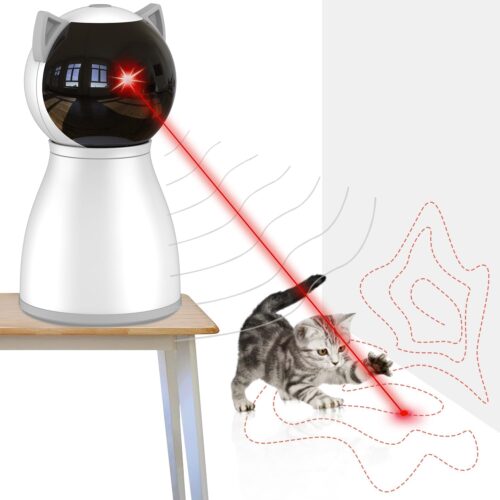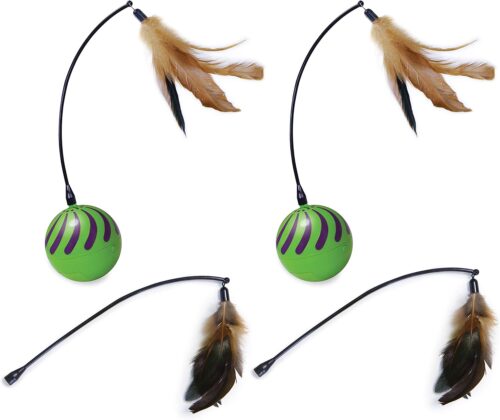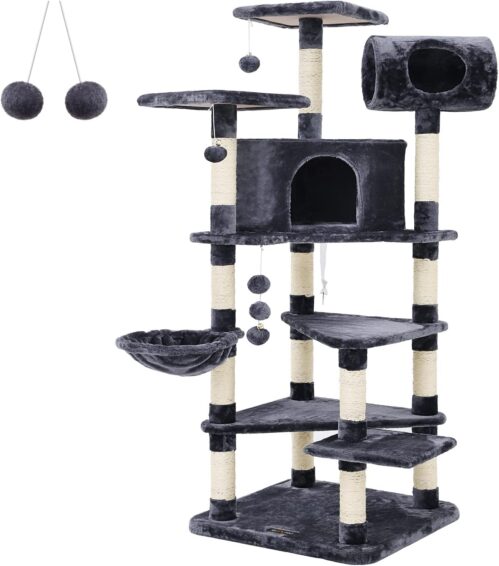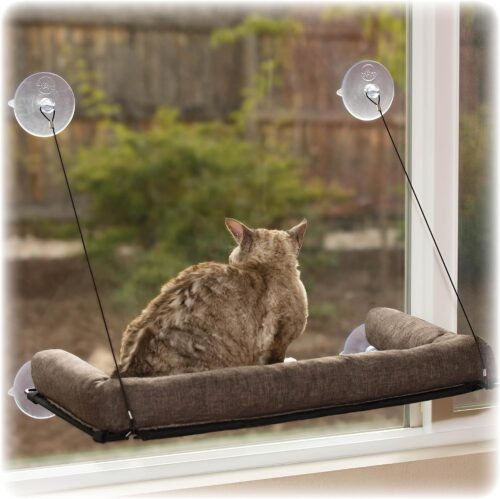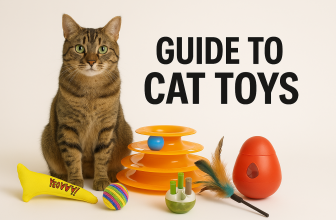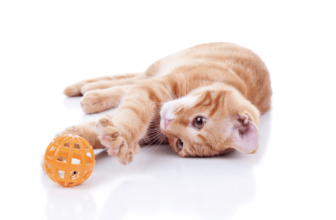Signs Your Cat is Bored and How to Help: Expert Tips
Introduction: Understanding Cat Boredom
Just like humans, cats crave mental stimulation. Without it, your feline friend might start acting out—or worse, slipping into depression. While many pet parents assume cats are independent and low-maintenance, the reality is far more complex.
Mental health in cats is often overlooked, but it’s crucial to their overall wellbeing. When a cat becomes bored, it doesn’t just get “lazy”—its entire physiology and behavior shift, sometimes in destructive ways.
The Evolution of Domestic Cats and Why Boredom is a Modern Problem
Domestic cats evolved from solitary hunters who relied on agility and cunning to survive. Fast forward thousands of years, and many now live indoors, confined to apartments with minimal stimuli.
While their bodies haven’t changed much, their environments certainly have. This mismatch often leaves modern housecats feeling under-stimulated and restless.
Top 10 Telltale Signs Your Cat is Bored
Here’s how to tell if your cat is bored out of its nine lives:
- Destructive behavior – Knocking things off shelves, tearing furniture.
- Excessive sleeping – Beyond the typical 12–16 hours.
- Over-grooming – Resulting in bald patches or sores.
- Aggression – Towards humans or other pets.
- Clinginess – Demanding constant attention.
- Random zoomies – Sprinting with no apparent cause.
- Scratching furniture – Even with a scratching post nearby.
- Appetite changes – Overeating or loss of interest in food.
- Obsessive behaviors – Like licking plastic or pacing.
- Yowling and vocalizing – Especially at night.
Is Cat Boredom Dangerous? (Short and Long-Term Risks)
Boredom can be more than an annoyance—it’s a health hazard. It can lead to:
- Depression
- Obesity
- Anxiety
- Compulsive disorders
This isn’t just about fun and games. It’s about quality of life.
The Science Behind Cat Enrichment
Scientific studies show that cats thrive in environments where they can play, hunt, and explore. Enrichment improves:
- Emotional wellbeing
- Cognitive function
- Physical health
Cats exposed to regular play are less likely to develop behavior problems and more likely to live longer, happier lives.
How to Prevent Boredom in Cats: 12 Proven Methods
Keeping your cat stimulated doesn’t have to be complicated. Here are tried-and-true methods:
- Rotate toys weekly.
- Play Cat TV or YouTube bird videos.
- Install wall-mounted climbing shelves.
- Use treat-dispensing toys.
- Schedule daily play sessions.
- Use interactive laser pointers.
- Hide treats around the house.
- Invest in cat tunnels or tents.
- Give them window access with a perch.
- Adopt a companion if feasible.
- Try clicker training.
- Introduce new scents like herbs or fabrics.
Product Roundup: Best Boredom-Busting Cat Toys on Amazon UK
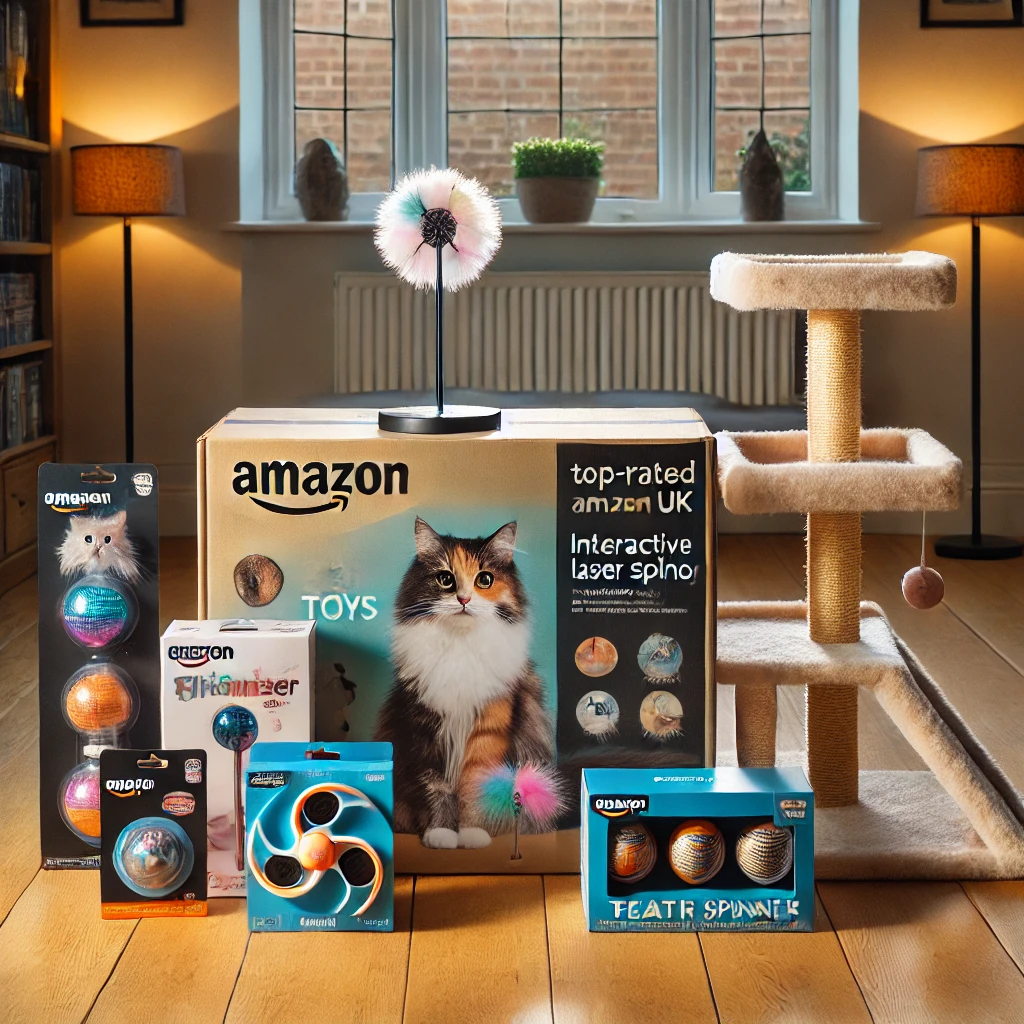
We scoured Amazon.co.uk to find top-rated cat toys with thousands of satisfied UK customers. Here are our favorites:
🐾 PETKIT Interactive Laser Cat Toy
Motion-activated, rotates automatically.
Great for solo play.
🐾 FEANDREA Multi-Level Cat Tree
Climbing, scratching, hiding—all in one.
Perfect for high-energy cats.
🐾 K&H Kitty Sill Window Perch
Gives access to the outdoors without danger.
Easy to install, super comfy.
How to Choose the Right Toy for Your Cat’s Personality
Every cat is different. Just like humans, they have quirks, preferences, and unique energy levels. Choosing the right toy isn’t a one-size-fits-all situation—it’s about matching personality to playstyle.
For Energetic, Young Cats
- Laser toys and interactive tunnels are a hit.
- Toys that mimic prey—like feather chasers—stimulate their inner hunter.
For Shy or Older Cats
- Puzzle feeders offer gentle, rewarding engagement.
- Consider slow-moving toys or hide-and-seek treats.
For Social Cats
- Toys that include human interaction, like wand teasers or fetchable plushies, foster bonding.
The key is observation. Try a few different types and take note of what gets those whiskers twitching.
DIY Cat Enrichment: Budget-Friendly Ideas That Work
You don’t always need a shopping spree to keep your cat entertained. Many cat parents get creative with household items. Here’s how:
| DIY Toy | What You Need | Why It Works |
|---|---|---|
| Sock filled with catnip | Old sock + dried catnip | Stimulates smell, encourages kicking |
| Cardboard box maze | Cardboard + scissors | Perfect for hide & seek |
| Toilet paper roll puzzle | Empty rolls + kibble | Affordable brain teaser |
| Hanging ribbon mobile | String + doorway | Moving targets spark interest |
Just make sure every DIY toy is safe—no loose threads, sharp edges, or small parts that can be swallowed.
Common Mistakes Owners Make That Lead to Cat Boredom
Even the most loving cat owners can fall into these traps:
- Assuming cats entertain themselves – Even independent cats need stimulation.
- Leaving out the same toys daily – Variety keeps things exciting.
- Skipping playtime – Cats need scheduled interaction.
- Ignoring changes in behavior – A bored cat may show signs of anxiety or aggression.
Awareness is the first step to breaking these bad habits.
Legal and Safety Considerations for Cat Toys in the UK
Cat toy safety is a serious issue. In the UK, always look for:
- CE marking – Indicates compliance with EU safety standards.
- BPA-free plastics – Especially for toys that go in mouths.
- Sturdy construction – No easily detachable parts or choking hazards.
Avoid toys with feathers or strings that can easily break off and be swallowed, unless supervised.
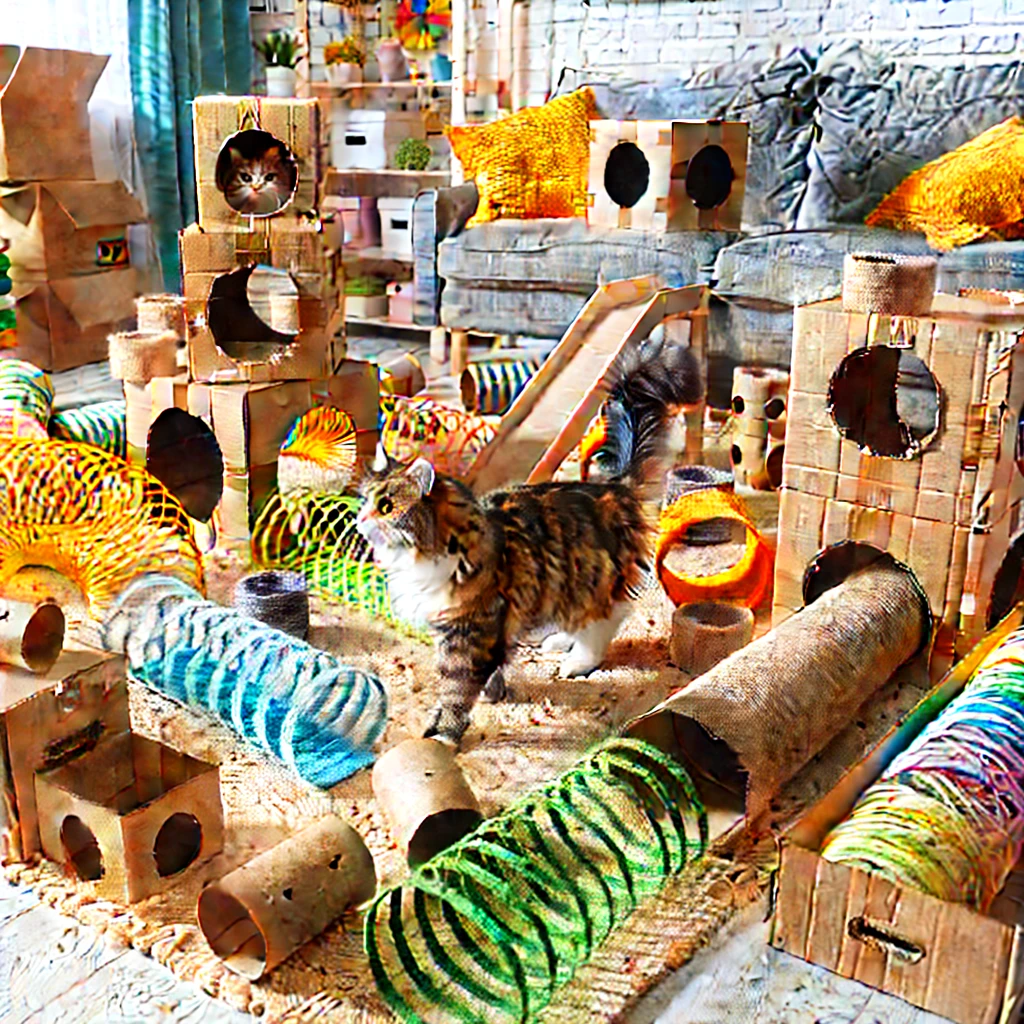
How Often Should You Stimulate Your Cat?
Cats thrive on routine. Aim for:
- Two 15-minute play sessions daily (minimum)
- Rotation of toys every 2–3 days
- One weekly new activity (DIY toy, scent game, etc.)
Consistency turns your home into a dynamic playground, not a boring box.
Seasonal Boredom: What Changes in Winter or Rainy Days
Winter can limit natural sunspots, window views, and outdoor adventures. Here’s how to counteract that:
- Install window perches and bird feeders.
- Use indoor lighting that mimics daylight.
- Keep up extra playtime when natural stimuli are low.
Rainy days are a great time for puzzle games or setting up indoor obstacle courses.
Success Stories: Real Cat Owners Share What Worked
“My tabby, Luna, was chewing on wires and shredding curtains. We tried the Catit Treat Ball and wall-mounted shelves from Amazon, and she’s like a new cat.” – Ellie, Manchester
“Adding a second cat was the best decision for Oscar. They play constantly now, and the house stays intact.” – Jack, Glasgow
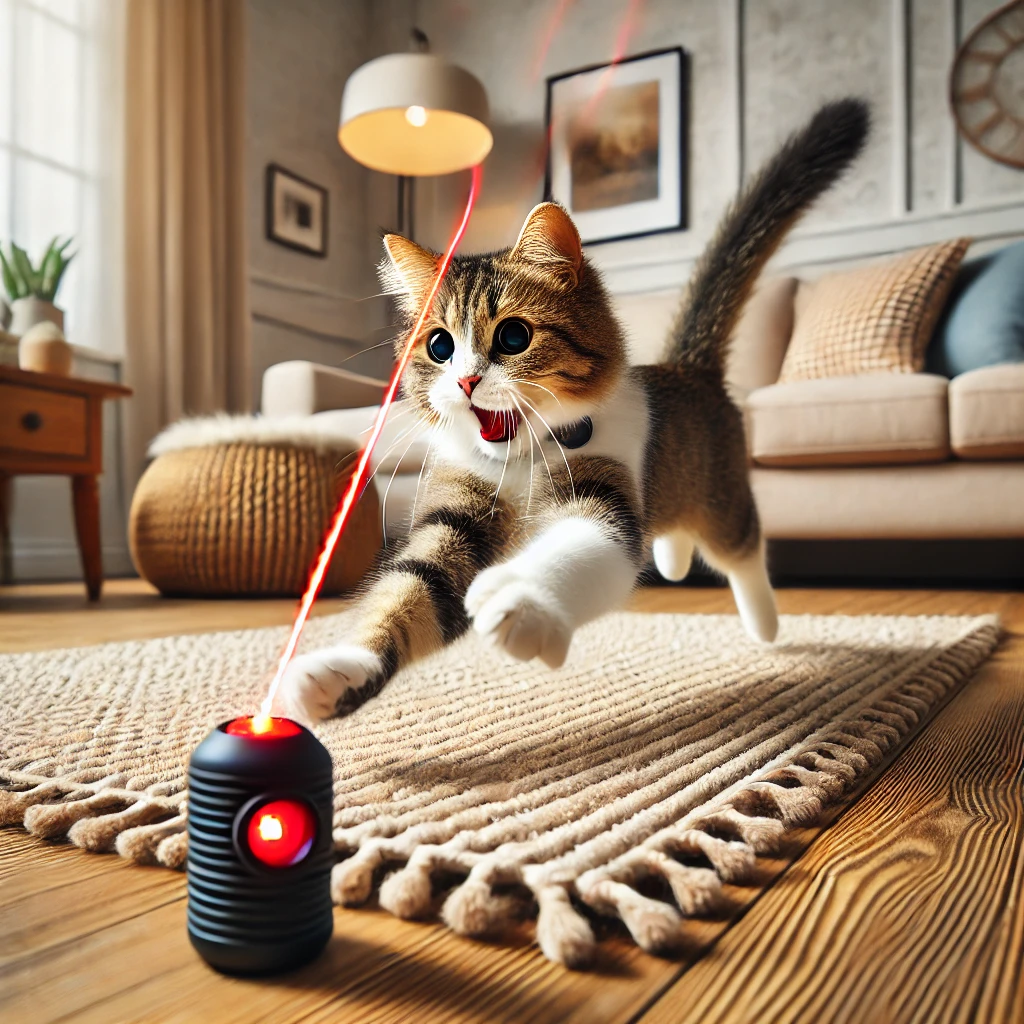
Final Thoughts: Don’t Let Your Cat Suffer in Silence
Boredom isn’t just a mood—it’s a health risk. Your cat may not speak your language, but its behavior speaks volumes. By recognizing the signs and taking proactive steps, you can give your feline friend a happier, more fulfilling life.
Whether you invest in top-rated Amazon UK toys or create DIY enrichments, the goal remains the same: stimulate the mind, activate the body, and engage the spirit of your cat.
FAQs About Cat Boredom
1. Can cats really get bored even if they sleep all day?
Yes. Cats do sleep a lot, but oversleeping out of boredom is a red flag. When awake, they should show curiosity and engagement.
2. What’s the best toy for a solo cat?
Interactive toys like motion-activated lasers or automatic spinners work well. Puzzle feeders also provide mental stimulation.
3. How do I know if my cat is playing or acting out?
Play usually includes stalking, pouncing, and batting. If your cat is scratching furniture or biting aggressively, it may be frustration.
4. Can boredom cause health problems?
Absolutely. Boredom can lead to obesity, stress, over-grooming, and even depression in cats.
5. Should I leave the TV on for my cat?
Yes! Cat-specific videos or nature channels can offer visual stimulation, especially when you’re not home.
6. Is it okay to use catnip every day?
Moderation is key. Too much catnip can desensitize your cat or cause hyperactivity.

